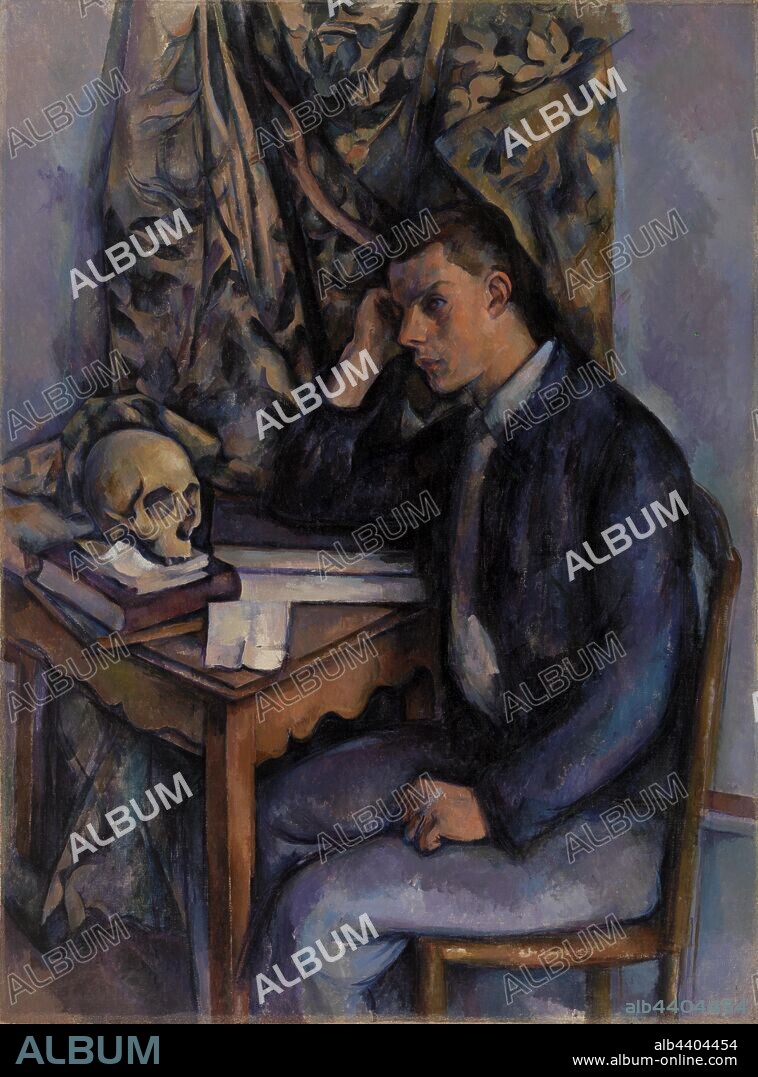alb4404454
Paul Cézanne: Young Man and Skull (Jeune homme à la tête de mort), Paul Cézanne, 1896–1898, Oil on canvas, Seated at a wooden table covered with books, a young man leans on his elbow in a pose recalling Renaissance representations of Melancholia, one of the four humors. Resting on the table across from him is a skull missing its lower jaw. The man and skull gaze past one another: while the object's hollow eye sockets stare blankly, its living human counterpart seems lost in thought, perhaps pondering his own mortality. Although skulls appear in some of his early canvases from the 1860s—they were a common studio prop with a long history in still life painting—the 1897 death of Cézanne's mother and his own declining health might have prompted a return to this symbolically loaded object., Overall: 51 3/16 x 38 3/8 in. (130 x 97.5 cm).

|
Añadir a otro lightbox |
|
Añadir a otro lightbox |



¿Ya tienes cuenta? Iniciar sesión
¿No tienes cuenta? Regístrate
Compra esta imagen.
Selecciona el uso:

Descripción:
Ver traducción automática
Paul Cézanne: Young Man and Skull (Jeune homme à la tête de mort), Paul Cézanne, 1896–1898, Oil on canvas, Seated at a wooden table covered with books, a young man leans on his elbow in a pose recalling Renaissance representations of Melancholia, one of the four humors. Resting on the table across from him is a skull missing its lower jaw. The man and skull gaze past one another: while the object's hollow eye sockets stare blankly, its living human counterpart seems lost in thought, perhaps pondering his own mortality. Although skulls appear in some of his early canvases from the 1860s—they were a common studio prop with a long history in still life painting—the 1897 death of Cézanne's mother and his own declining health might have prompted a return to this symbolically loaded object., Overall: 51 3/16 x 38 3/8 in. (130 x 97.5 cm)
Personas:
Crédito:
Album / quintlox
Autorizaciones:
Modelo: No - Propiedad: No
¿Preguntas relacionadas con los derechos?
¿Preguntas relacionadas con los derechos?
Tamaño imagen:
4880 x 6591 px | 92.0 MB
Tamaño impresión:
41.3 x 55.8 cm | 16.3 x 22.0 in (300 dpi)
 Pinterest
Pinterest Twitter
Twitter Facebook
Facebook Copiar enlace
Copiar enlace Email
Email
